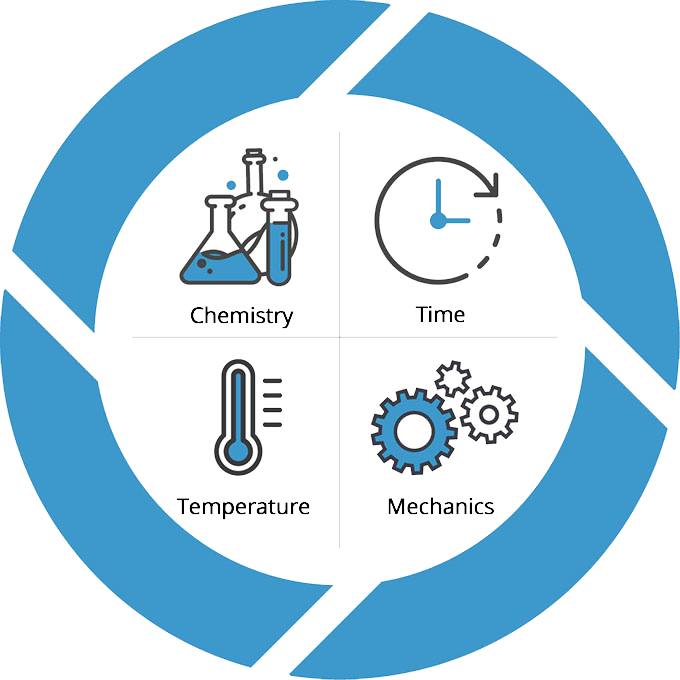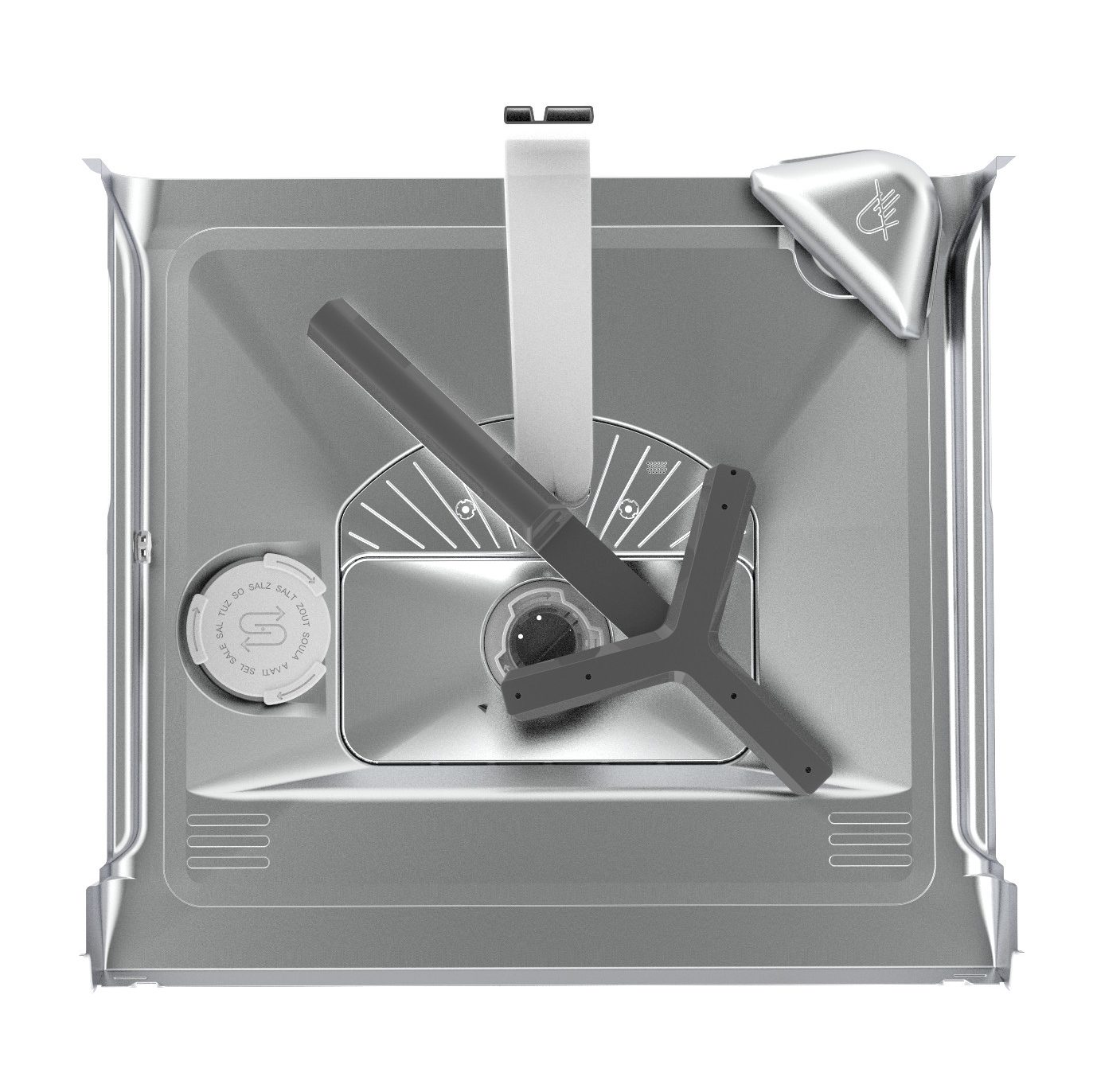how dishes are cleaned
The Sinner Circle explains it quite well: these four factors influence the cleaning result. If one component (such as time) is extended, the others are needed less because the dirty dishes soak longer and are therefore easier to clean.

The spray arms and the water pressure from the nozzles represent the “mechanical” aspect.


wide nozzle spray area
strong & foccussed nozzle
1: Controlled Lower Spray Arm
A dishwasher’s sprayarm is usually powered by the centrifugal forces of the water.
The “Controlled lower Spray Arm” is a motorized version, that is capable of moving independantly of the water. The CLS was introduced to US market and is beeing roled out worldwide.



2: Extra Clean Zone
This intensive zone doesn’t need higher temperatures; it uses three jets to clean stubborn items. I helped work on the jets, focusing mainly on the manual user switch to turn this feature on and off.



3: Concept
I am most proud of this concept: a four-chamber spray arm where the two diagonal ones are active, allowing the spray arm to rotate in two different directions without a motor. The benefit is that the water reaches different areas, leading to better cleaning results.

Clockwise turning
The water is sluggish and takes on a direction.

Counterclockwise turning
The waternozzles turn their direction and the angles is better to reach hidden areas.


If the water came only from one direction, the dark areas of the graphic bowls wouldn’t be directly exposed to a water nozzle.
How does it work?

Four chambers, with the two diagonal ones being active.
The switch to the other two chambers can be achieved by a change in water pressure:








